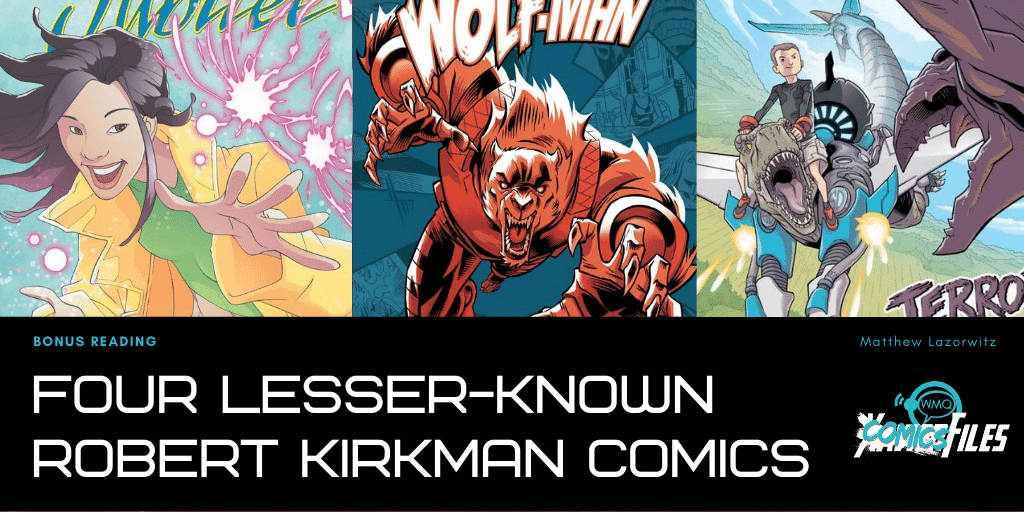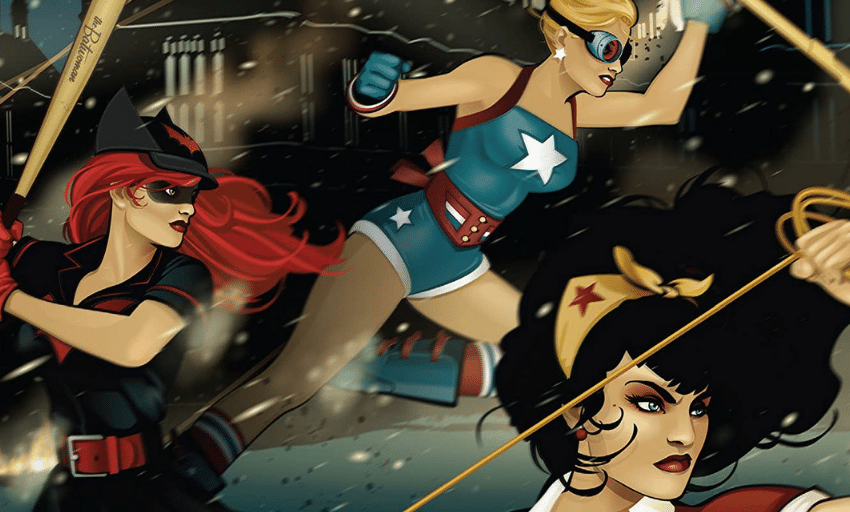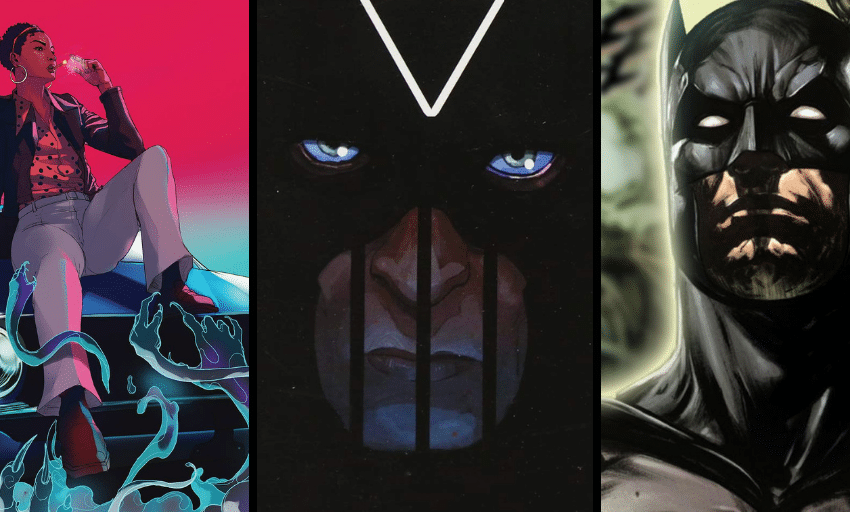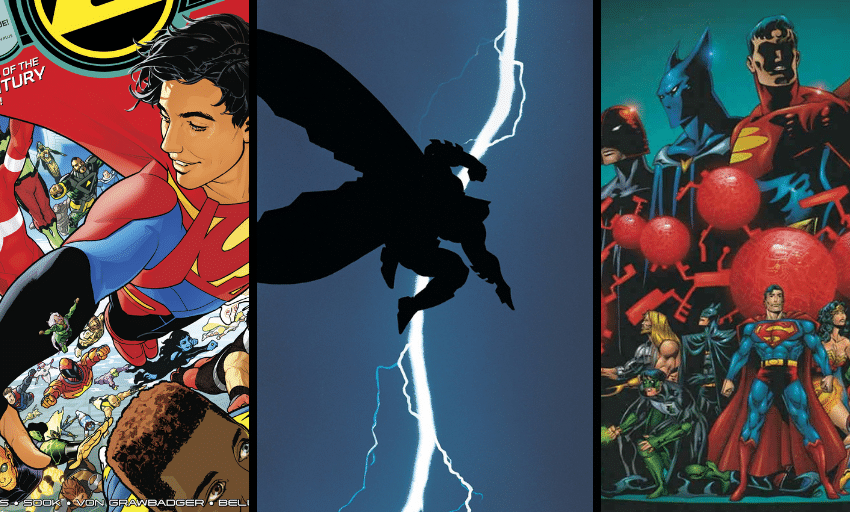When someone says “Robert Kirkman,” what title springs to mind? For most people outside comic fandom, and many in, it’s likely his cross-media hit, “The Walking Dead.” For many other comic fans, it might be his superhero title, “Invincible.” There might even be some people who jump to “Outcast,” his demonic possession drama that was adapted for Showtime.
But Kirkman’s career is much more than those major titles. He started out self-publishing his sacrilicious parody comic, “Battle Pope,” in 2000 from his own company, Funk-O-Tron, before moving to Image, where his earliest works were “Savage Dragon” spin-off miniseries. And alongside the long-running “Walking Dead” and “Invincible,” he’s published a few other ongoings and minis, plus all sorts of work for Marvel.
Last week saw the post-graphic novel launch of his newest ongoing, “Fire Power,” with Chris Samnee and Matt Wilson, so this week, we’re looking at four of Kirkman’s other, lesser-known comics work.
Astounding Wolf-Man

I love werewolves. The concept of the beast within, the struggle to maintain your humanity against something that is pulling you away from it, is the horror concept that speaks to me most. And while there have been various superhero werewolves before, the mingling of the two genres has probably been handled best in Robert Kirkman and Jason Howard’s “The Astounding Wolf-Man.”
On a camping trip with his family, wealthy CEO Gary Hampton was attacked by a werewolf, who left Gary wounded and cursed with lycanthropy. Except at the beginning it’s not much of a curse. Gary can change at will, and decides to become a superhero. He even gets a mentor, the vampire Zechariah. But things start to go bad when Gary realizes that on the first night of the full moon he can neither control his transformation nor the beast within. And when Zechariah, in a fit of rage, kills Gary’s wife and frames him for the murder (OK, the fridging there is more than a bit uncomfortable), Gary goes on the run.
The book takes place in the “Invincible” universe, so there are plenty of characters who appear in both books. A good part of the series feels like a superheroic version of “The Fugitive,” with Gary trying to clear his name, and even spends an arc in a prison for superbeings. Kirkman uses the book to flesh out the supernatural and monster corner of his universe, spending time introducing other werewolves. But the core of the book winds up being Gary’s relationship with his daughter, Chloe, whom he must first fight as she has been lied to by Zechariah, and then work with to avenge her mother.
“Astounding Wolf-Man” ran for 25 issues, and while hooks were left for future stories, it does a good job of wrapping up. If you enjoy horror heroes, like Marvel’s classic ’70s monster comics, and want something with a more modern take, this is a series worth checking out.
Super Dinosaur

OK, so one of the OTHER things I love almost as much as werewolves is dinosaurs. Who doesn’t? When I was a little kid, I had an army of toy dinosaurs. So the reunion of the “Astounding Wolf-Man” team of Kirkman and Howard is the dream of so many: being a kid whose dad is a super scientist and whose best friend is a person-sized, talking tyrannosaurus!
“Super Dinosaur” is the all-ages story of the lovable titular dinosaur, his precocious best friend, Derek Dynamo, and their friends and family’s quest to protect the world from evil scientist Max Maximus, his evil Dino-Men and the mysterious Exile. The names are clearly broad and alliterative, harkening to the comics of the Silver Age. And while the book is full of big set pieces and wild action, it is, as are most of Kirkman’s books, a story about families. In this case it’s Derek, his adopted dino brother, and Derek’s super scientist father, Dexter Dynamo, as Derek tries to protect his dad from his own failing mind; and the Kingston family, husband-and-wife mechanics who have come to work with Dr. Dynamo, and their two daughters, one of whom is happy to have moved to Dynamo HQ and one who most certainly isn’t.
This series is a lot of fun, and perfect for middle grade readers; the dinosaur aspect may appeal to a slightly younger crowd as well, but while it’s nowhere near as intense as the standard Kirkman fare, it’s still pretty intense for the really wee ones, although your mileage may vary based on your kid. For the littler ones, I recommend the TV adaptation, which is streaming on Amazon Prime. It’s a faithful adaptation of the plot but smooths some of the rougher edges for that pre-8-year-old crowd.
Jubilee

Remember the period of time before Jubilee was a vampire but after she stopped being a main character in “Generation X”? Yeah, most people don’t because she was pretty much shuffled off to comic book limbo during that time, appearing mostly in cameos where she’s hanging with Wolverine or being crucified by human religious fanatics on the X-Mansion lawn. The early ’00s were not a kind time to Jubilation Lee.
But Kirkman, who grew up on the Marvel Comics of the late ’80s and early ’90s (more on those in a bit), he remembered. And when Marvel gave him the chance, he went and wrote a now lost and out-of-print six-issue miniseries starring the X-Men’s chili-fry loving mallrat. Published under Marvel’s all-ages line, “Marvel Age,” with art by Derec Donovan and Casey Jones, this was one of a couple series that tried to branch beyond the line’s reimagined superhero Earth, including series like “Ororo: Before the Storm” and “Mary Jane.” But as opposed to those, this series took place in the current Marvel continuity, and followed Jubilee as she moved back to Los Angeles to try to live a “normal” life with her just discovered aunt.
The plot puts Jubilee, who was having a hard time dealing with the post-“New X-Men” status quo at the mansion, in a high school setting, where she has to finally finish school while also serving as a student counselor for other kids. Jubilee has to make friends, try to fit in and still deal with the anti-mutant sentiment that is never far away in the Marvel Earth. But it’s still a superhero comic, and so there are mutant street gangs and her aunt’s mysterious past. And because it’s an X-related comic from the 2000s, it features the requisite Wolverine appearance. It’s a fun, if not exactly unpredictable series, and is an example of early attempts to capture the same audience of later Marvel books like “Unbeatable Squirrel Girl” and “Unstoppable Wasp.”
League of Losers (‘Marvel Team-Up’ Vol. 3 #15-18)

Kirkman’s 25-issue run on the third volume of “Marvel Team-Up” is mostly forgotten. There was the issue where Invincible met Spider-Man, and the problematic “bury your gays” issues with the introduction and quick death of Freedom Ring, one of the few out gay heroes in the Marvel Universe at the time; that’s probably what the run is best known for. But buried in the middle of the series is a gem of an arc if you’re a fan of ’90s Marvel: “The League of Losers.”
Published in early 2006, this four-part arc was written by Kirkman and drawn by Paco Medina. When a time-travelling supervillain, Chronok, arrives from the far future to conquer the world, he does something you’d think time-travelling villains would do more often: He comes back with thorough research on the heroes of the time and how to take them out. And he does.
But there are other heroes, heroes who are so obscure that they didn’t appear in Chronok’s records. And these heroes form a team to try to stop him in the present, and when that doesn’t work, by travelling to his home time of 2099. The team included X-23, who was just starting to rise in popularity, and two more obscure teen heroes of the time, Araña and Gravity. But the rest of the team is a gift for fans of the heroes of the Marvel ’90s: Speedball, Dagger, Darkhawk, Sleepwalker and Terror Inc. Add in Mutant 2099, the mutant character from Kirkman’s fifth-week 2099 event, and you have a collection of heroes no one expected. It’s not the deepest Marvel story you’ll ever read, but it’s a fun, wild ride.
Matt Lazorwitz read his first comic at the age of five. It was Who's Who in the DC Universe #2, featuring characters whose names begin with B, which explains so much about his Batman obsession. He writes about comics he loves, and co-hosts the creator interview podcast WMQ&A with Dan Grote.






